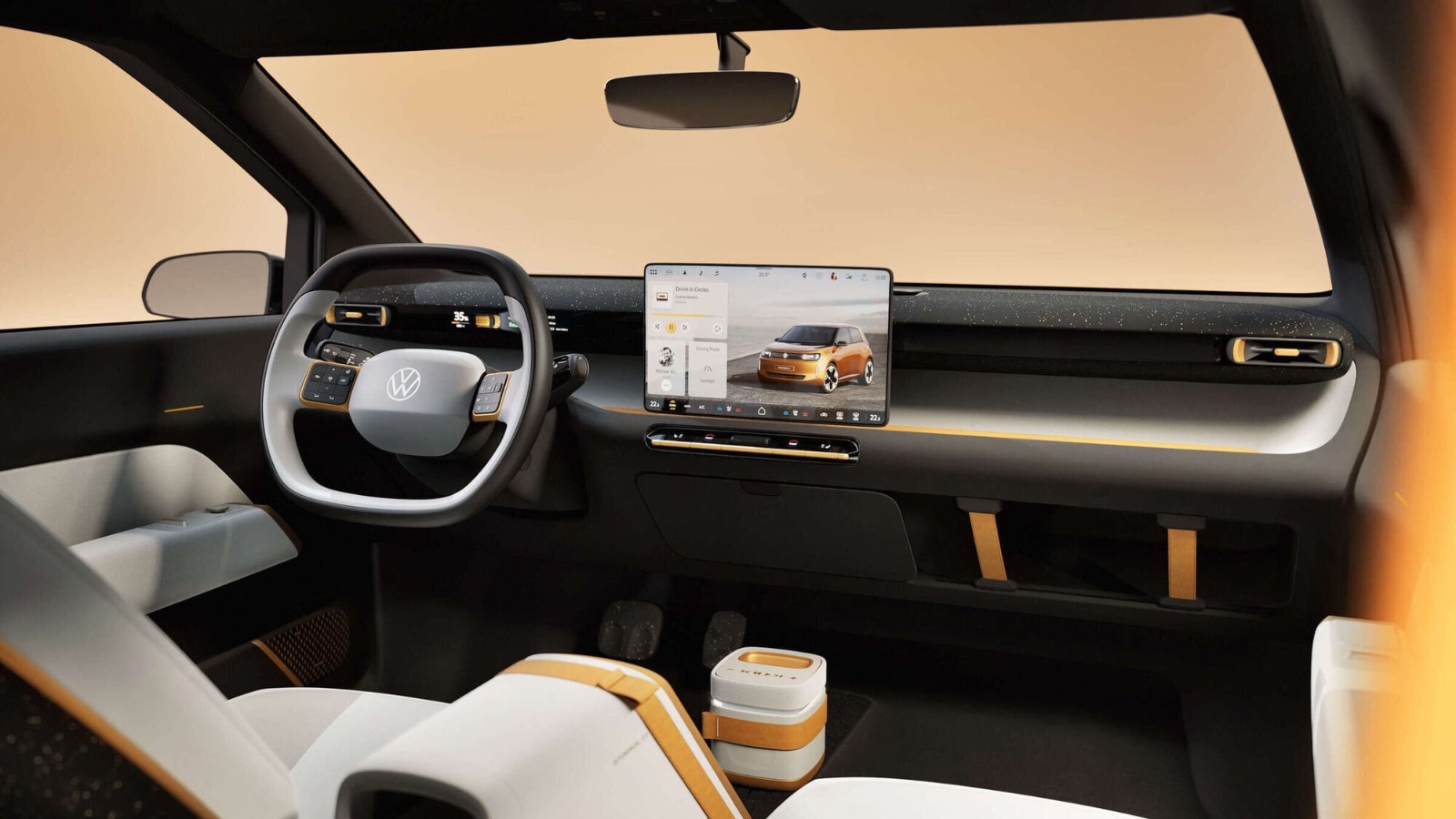Volkswagen is bringing old-fashioned physical buttons to its cars; here’s why | Technology News

There was a time when every carmaker rushed to include futuristic, giant dashboard screens—so much so that they had become the next big leap in car technology. However, car manufacturers eventually realised that relying entirely on dashboard screens, especially for vital functions, could lead to design issues. Volkswagen is the latest car maker to admit that implementing touchscreen-only controls was a mistake, and the company has decided to reintroduce physical buttons for crucial functions.
The automaker’s design head Andreas Mindt told Autocar that the strategy to switch to a touchscreen control interface on the steering wheel was a disaster. “We will never, ever make this mistake any more. On the steering wheel, we will have physical buttons. No guessing any more. There’s feedback, it’s real, and people love this,” Mindt told the publication. “Honestly, it’s a car. It’s not a phone: it’s a car.”
In late 2022, the European car manufacturer boldly attempted to ditch traditional physical buttons and switch to touch-sensitive controls on the steering wheel. However, that decision wasn’t wise, as it led to a flood of customer complaints.
Mindt said the next-gen VW models would feature physical buttons for the five most important functions: volume, seat heating, fan controls, and hazard lights—located right below the infotainment screen. He further added that the shift would apply “to every car we make from now on. We understood this.”
The first Volkswagen car to adopt the change will be the ID.2all electric supermini, which is set to launch in 2026. The car will include an extra row of physical buttons under the infotainment display.
Volkswagen isn’t the only leading carmaker rethinking the move back to physical buttons. Last year, Hyundai admitted it had made a mistake by replacing physical controls with touchscreen buttons. The automaker’s US design chief said American drivers hated the trend, and future Hyundai models will feature more old-school physical controls.
“When we tested with our focus group, we realised that people get stressed, annoyed and steamed when they want to control something in a pinch but are unable to do so,” Ha told Korea JoonAng Daily.
Story continues below this ad
It was Tesla that started the trend of fitting giant touchscreens into cars, gradually phasing out physical controls. Other carmakers followed suit, but drivers never fully embraced the idea of relying entirely on touchscreen-based controls. Embracing touchscreen technology and a “button-less” design philosophy, then integrating it into cars, was seen as a way to make vehicles function more like smartphones. Now, car companies are realising that it was a mistake to make cars function like smartphones.
Volkswagen’s announcement to bring back physical buttons in its cars comes at a time when the EU’s New Car Assessment Program (NCAP) is set to introduce new rules next year, requiring cars to have certain physical controls to achieve a full five-star safety rating.
Carmakers, especially those from the US and China, are still backing the vision of cars as computers on wheels, with many prioritising a fully integrated touchscreen experience where everything is controlled through voice commands.




